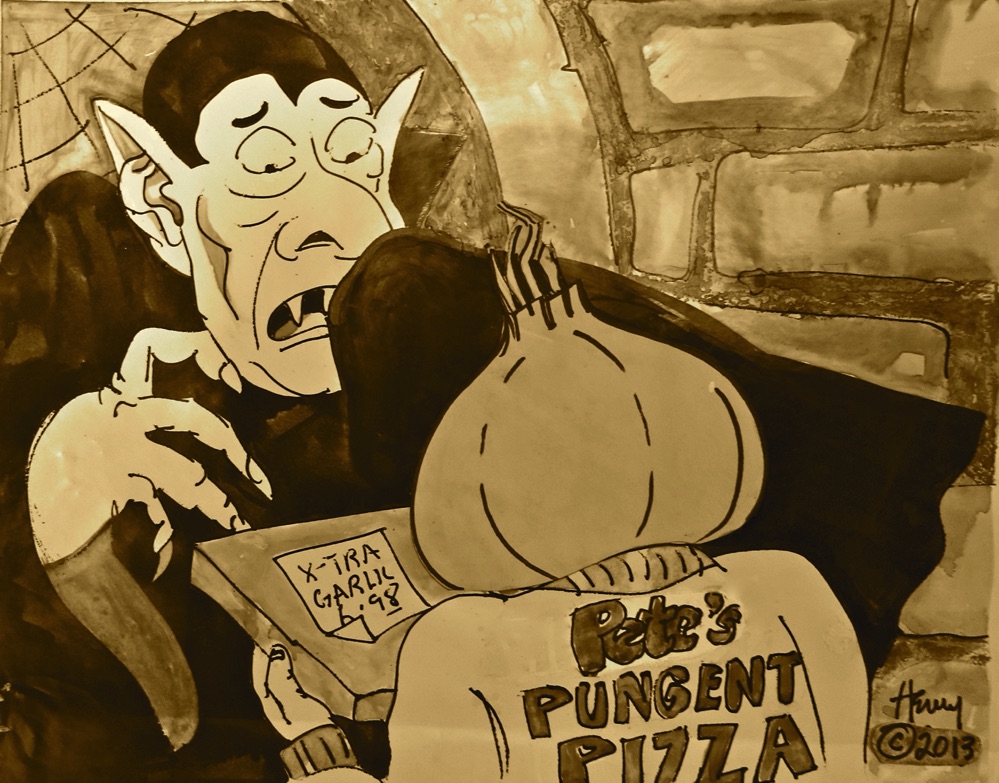Spilling the Beans on Chinese Garlic
By
Chef Henry M. Summers

Would you drive across town to buy sprouted garlic? Ironically, those tiny green shoots–once grounds for rejection–may be the only clue that your garlic hasn’t been irradiated.
The evidence, however, is inconclusive. At the lowest dose used (1 KiloGray, equal to roughly 17,000,000 chest X-rays), irradiation only prolongs the dormancy period before the garlic would normally sprout. But higher doses (up to 30 KiloGrays) will prevent sprouting altogether.
This heavily irradiated garlic can look as tempting as a seventeenth-century Dutch still life. But at the clove’s heart, you’ll find only a dead, brown, decomposing sprout.
Enzymes–proteins essential for innumerable biochemical processes–are destroyed by irradiation. Without the enzyme aliinase, for example, garlic can’t form allicin, the sulfur
compound primarily responsible for garlic’s pungent perfume and redoubtable healing
powers.
Food irradiation is nothing new–the first patents were awarded in 1905. Its advocates argue that it’s safer for people and the environment than industrial herbicides and food
preservatives.
As an either-or proposition, perhaps they are right. But instead of debating which of these dangerous and obsolete technologies will kill us first, we would be better off asking the
question: How can we best preserve our food supply, and our planet?
If imported produce has been irradiated, it must say so on the shipping documents. But the vendor from whom we buy it has no legal obligation to disclose that information–only where it came from. Accordingly, I will take a pass on Chinese garlic.
One of the best things we can do to protect our families and environment is to grow our own organic vegetables. Garlic is among the easiest. If you don’t have a backyard, join a
community garden.
If you don’t raise your own vegetables, buy them from farmers who grow organic produce from non-genetically modified seed. Try to eat locally, sustainably, and seasonally.
Contact your state and federal legislators, and demand that irradiated and genetically modified foods be clearly labeled. This is law in at least fifty countries already. Seventy-seven percent of Americans want it. Shouldn’t the choice be ours?
Chef Henry’s Garlic Bread, Two Authentic Recipes
Version Number One:
Slice French or Italian bread three-quarters- to one-inch thick. Toast on a barbeque grill, or better yet, impale the bread on a long fork, and toast over a wood fire.
If neither of these methods are convenient, place the bread on a cookie sheet in a 450-degree oven, turning once to brown both sides. If you have only a few pieces to do, a toaster will do fine. Remove to a plate. Cut a garlic clove in half. (If you leave the peel on, your fingers won’t wind up smelling as bad as your breath.) Rub all over the crust and surface
of the hot toast.
Season liberally with kosher or sea salt and fresh black pepper. Then brush generously with the finest extra-virgin olive oil. This is the authentic garlic bread of Tuscany in northern Italy.
Version Number Two:
Slice French or Italian bread three-quarters- to one-inch thick. Spread generously with bottled mayonnaise that has been mixed with puréed or very finely minced fresh garlic or organic
garlic powder, paprika, oregano, salt and pepper, all to taste. Brown in a 450-degree oven until puffed and brown. This is the authentic garlic bread of Cliffside Park in northern New
Jersey.
